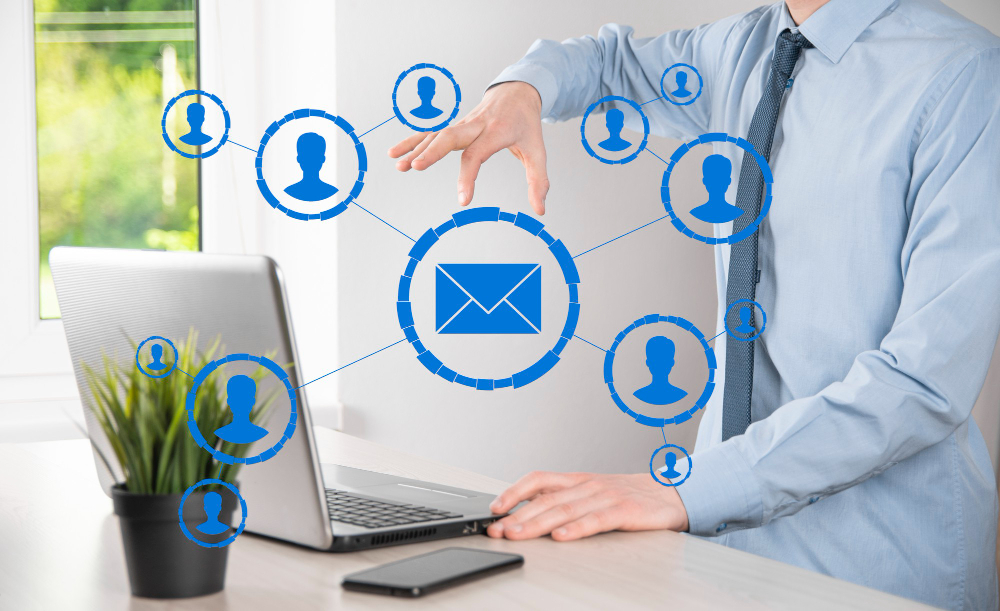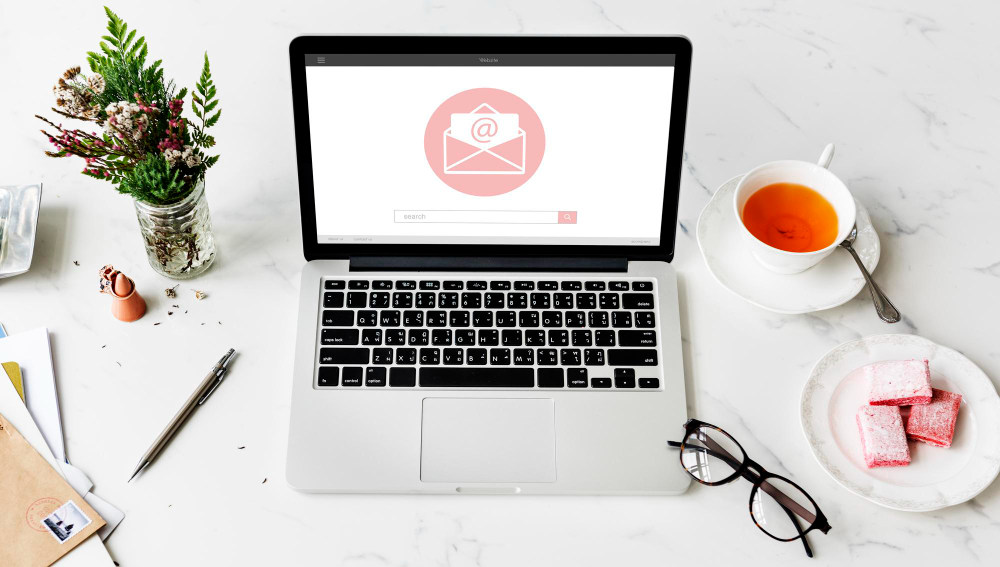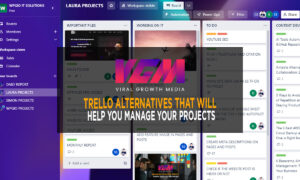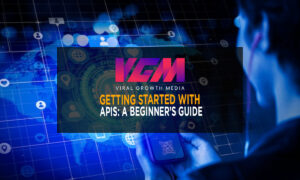Do you want to learn how to do effective B2B Email Marketing? If so, you have come to the right place! In this guide, we will teach you everything that you need to know in order to create successful email campaigns that generate results. We will cover everything from creating an email list to designing your emails to sending them out. So whether you are a beginner or a seasoned pro, this guide has something for you!
The first step to effective B-to-B email marketing is creating an email list. This can be done a number of ways, but the most common method is to use a lead capture form on your website. You can also purchase lists from third-party providers, but we recommend building your own list so that you have complete control over who you are emailing.
Once you have your list, the next step is to design your emails. This is where many people get tripped up, but it doesn’t have to be difficult! There are a few key components that every effective email should have:
– A catchy subject line:
This is the first thing that your recipients will see, so make sure it’s something that will grab their attention.
– Personalization:
Addressing your recipients by name is a simple way to personalize your emails and make them feel more like a conversation than a marketing pitch.
– A clear call to action:
What do you want your recipients to do after reading your email? Make sure your call to action is clear and easy to follow.
– A sense of urgency:
Creating a sense of urgency will encourage your recipients to take action now rather than putting it off for later.
Once you have designed your emails, it’s time to send them out! But before you hit the “send” button, there are a few things you should keep in mind:
– Timing is everything:
Sending your emails at the right time will maximize their chances of being seen and acted upon.
– Test, test, test:
Always test your emails before sending them to your entire list. This will help you catch any mistakes and make sure that your emails are looking their best.
– Monitor your results:
Keep an eye on your open and click-through rates so that you can see what’s working and what’s not.
following these simple tips, you’ll be well on your way to doing effective B-to-B email marketing! So what are you waiting for? Get started today and see the results for yourself.
A good email marketing strategy is a mix of various types of emails that helps your leads turn into potential business clients. Obviously, it takes more than just coming up with a clever subject line to get B2B sales.
To carry out an effective B2B email marketing campaign, your sales team needs to be aware of the best strategies. If you’re doing it yourself, make sure to train your staff on the difference between B2B and B2C email marketing techniques.
When we talk about B2B email marketing, things differ from what we’ve discussed with regard to B2C marketing. In B2C email marketing, you attempt to appeal to your consumers on an emotional level. Your goal is to persuade them to buy your product by emphasizing the advantages they will receive if they do so. However, in B2B email marketing, you must use more logical and rational thinking than in B2C marketing.

Define your goals for email marketing
Before you launch your email marketing campaign, you need to have a clear idea of what you want to achieve. Are you looking to generate leads? Drive traffic to your website? Nurture relationships with existing customers?
Your goals will dictate the strategies and tactics you use in your email marketing, so it’s important to have a firm understanding of what you’re trying to accomplish before you get started.
Once you know your goals, you can start planning your email marketing strategy. Begin by segmenting your audience into different groups so that you can tailor your messages to them. You might have separate lists for existing customers and prospects, or segment your list by demographics like industry, job title, or location.
Once you’ve segmented your audience, you’ll need to decide what kind of content to include in your emails. If you’re looking to generate leads, for example, you might want to include case studies, white papers, or product demos. If you’re trying to build relationships with existing customers, on the other hand, you might want to focus on sending helpful tips, exclusive offers, or customer success stories.

Segment your email list to ensure that you’re targeting the right audience
To do this, you need to understand your buyer persona and what they’re looking for from your company. Once you have a clear idea of this, you can segment your email list accordingly.
Next, you need to create an email campaign that is targeted at each segment of your audience. Your campaign should have a clear message and a call to action that is relevant to each segment.
Finally, you need to track the results of your email campaign to see how it is performing. This will help you to make necessary adjustments to improve your results.
Create compelling content that engages and informs your readers
Your content should be well-written and provide value to your readers. It should be interesting and relevant to your business niche. If you’re not sure what to write about, consider creating a blog post series that covers a specific topic in depth.
To ensure that your content is effective, make use of email marketing best practices. Write compelling headlines that make it clear what benefit the reader will get from reading your email. Use engaging visuals, such as images and infographics, to break up your text and add interest. And finally, make sure your call-to-action is clear and easy to follow.

Use images and graphics to break up the text and make it more visually appealing
Include a call to action (CTA) in your email, preferably above the fold. Make it easy for recipients to know what you want them to do next.
Test, test, test! Try different subject lines, calls to action, send times, and types of content to see what gets the best results with your audience.
And last but not least, segment your list! By sending more targeted emails to smaller groups of people, you’re more likely to see better results overall.
Test different subject lines to see which ones get the most opens
You can also test different “from” names to see which ones get the most clicks. And, of course, always test your call-to-action to see what gets the most conversions.
Batch and blast email campaigns are a thing of the past. In order to create truly effective BDCemail marketing campaigns, you need to segment your lists and send targeted messages to each group.
Personalization is key when it comes to BDC email marketing. Include the recipient’s name in the subject line and/or body of the email for best results.
In order to get the most out of your BDC email marketing campaigns, you need to track your results. Use Google Analytics or another similar tool to track opens, clicks, and conversions.
Monitor your results and adjust your strategy accordingly
To ensure that your Bb email marketing campaign is effective, you need to monitor your results and make adjustments to your strategy as needed. This includes tracking metrics such as open rates, click-through rates, unsubscribe rates, and more. By doing this, you can determine what is and isn’t working and make changes accordingly. Additionally, it’s important to keep an eye on your competition and see what they’re doing that’s working well. You can then adapt and improve upon their strategies.
Why Your Company Should Have a B2B Email Marketing Strategy
In today’s business climate, it is essential that your organisation has a B2B email marketing strategy. To put it plainly, these statistics show that B2B email marketing generates more engagement, and more engagement leads to more conversions and revenue.
B2B email marketing is an important component of your overall inbound marketing arsenal, and you should use it as part of your total marketing plan. Take a look at what HubSpot has to say about it:
Email marketing may not be winning the largest portions of B2B marketing budgets, but it remains an important and cost-effective solution for driving lead generation efforts and building relationships with clients. A well-crafted marketing email can start the sales conversation with valuable leads and help you stay connected to your most profitable clients”.

Use a Comprehensive Email Marketing Tool
Email service providers provide more than just cost savings. They also offer unique capabilities to improve the effectiveness of your emails at each touchpoint. Of course, no marketer sends out hundreds of emails manually in one sitting.
Email marketing tools exist to do more than just allow you to send a lot of emails at once. They’re also meant to segment your audience, maintain lists, run promotions and automatically email people in certain situations, track metrics, and deliverability.
With these marketing tools, you can easily customize your emails to make them mobile responsive. According to recent statistics, nearly 35% of business professionals check email on their mobile devices, so it’s crucial that your emails are accessible and easy to read on all platforms.
B2B Email Marketing Tips
You’ve come so far in your journey to create a fruitful B2B email marketing strategy, and now you’re prepared to take on some core email marketing methods that will develop rapport with both your current and future B2B clientele. Always keep in mind that email marketing is personal—once you have somebody’s email address, it feels like you have their home phone number. Use this data thoughtfully.
Tip 1: Build Lists
Your email marketing strategy is only as good as your distribution lists. These should be designed with precision and accuracy, to make sure you’re sending the right message to the right people at the right time. Depending on what type of business you have, these lists can be based off new or old clients, interests, etc. The key here is making sure that each list serves a purpose and furthers your overall objective.
Tip 2: Get Specific
This email marketing approach, also known as segmentation, enables you to target certain email users with a particular invitation or message. If a firm wishes to interact with its most loyal business clients, it will segment its email list into a specific demographic category and then send them special deals, relevant blog articles, or event alerts. Because segmentation is frequently seen as a luxury service for an ESP, expect to pay a few extra dollars.
Tip 3: Get Automated
An ESP should allow you to interact with your prospective or existing customers in a timely and relevant manner through automation. Using an auto responder to contact someone who has submitted a form or downloaded information on your website is an excellent example of automation. An auto responder can be set up that will contact a potential customer if someone signs up for a newsletter on your website and is a new user.
Tip 4: RSS-to-Email Is Your Friend
If you create a RSS-to-email feed for your business’ blog content, every time you generate new material, an email newsletter will be sent out to everyone who is subscribed to your list. The beauty of this approach is that it’s entirely up to you when and how frequently your email subscribers are exposed to your material. The secret to creating an RSS-to-email feed lies in providing access to opt in or out at all times. If your content is relevant and high quality, the reader will most likely continue subscribing to your RSS-to-email feed every time it activates.
Tip 5: Nurture Your Leads
Creating a Lead Nurture campaign is made up of a sequence of emails that are sent out over time and are intended to pique potential clients’ interest in your company. These are the individuals who have been rolling down the window and giving it a test drive but still need some prodding. A Lead Nurture campaign might use as many emails per week, month, or year as you want to send your prospective client. These emails are a good technique for a firm to dangle the carrot using blog posts or other types of content to encourage repeat visits.

When to Use Email Marketing
Email marketing can be used in a variety of ways, but there are a few that are especially common. The following are just a few examples: Using email marketing to:
Build relationships:
Create relationships through individualised interaction.
Boost brand awareness:
Constantly remind your potential customers of your company and its offerings so they think of you first when they’re ready to buy.
Promote your content:
You can use email to share blog posts or assets that would be useful to your potential customers.
Generate leads:
In exchange for an item that they’d find useful, entice subscribers to give away their personal information.
Market your products:
Create and promote your own merchandise and services.
Nurture leads:
Your customers will feel ecstatic when they see the content you’ve provided them helps achieve their goals.
Email Marketing Benefits
- With over 4 billion email users worldwide, you’re bound to find your target customers if you market through this method.
- Email marketing is one of the top 3 most effective marketing channels for 79% of marketers.
- Amongst all types of website visitors, email subscribers are the most likely to convert on forms.
- The number one perk to email marketing is that you have complete control over the channel. Aside from a few regulations, there’s nobody that can influence how, when, or why you contact your subscribers.

Check your Lead Generation Strategy
Your lead generation strategy has a major flaw if you do not optimise your landing pages or forms. Inaccurate messaging leads to decreased conversion rates, as seen in the example below.
You had 1,000 visitors come to your landing page and paid $2 per visit. If your form’s conversion rate was only 1%, that would be 10 leads at $200 total–coming out of your pocket. However, if your conversion rate was 4% instead of 1%, you would have 40 leads at a CPL (cost-per-lead) of $50.
In summary, building custom forms and landing pages with an email marketing tool is key to successful lead generation. These forms should be short, no longer than two or three fields.
An outsourced sales team can help you reach your objectives. They are educated in this area and have the required knowledge and expertise to create high-quality leads. This is due to the fact that 61 percent of B2B marketers find generating high-quality leads to be the most difficult part of their job.
Employ an Effective Lead Nurturing Process
It takes longer to create B2B sales than B2C purchases, therefore you’ll need a lot of patience. As a result, before you begin any campaign, make sure your buyer persona is up to date. In B2B email marketing, knowing your target audience becomes increasingly important.
What is the most effective method for nurturing leads? Taking your potential consumers on a unique journey every time they progress through awareness, consideration, and decision making is what makes a successful lead nurturing approach. Running a series of email drip campaigns according to these phases is the greatest technique to develop your leads.
In the awareness stage, you must inform them of your brand in order for them to be aware of it. You should provide them with instructional material in this stage. The prospect’s subconscious is alerted to their issues by means of this sort of information. For example, you may send them educational movies, blog articles, infographics, or other such things.
At this stage, the prospects have identified various challenges they are facing. They want to know what could be done about it. Here, you’ll need to employ your most valuable weapons, such as marketing playbooks, ebooks, white papers, case studies, short webinars, and your brand’s email newsletter. In fact , “Email newsletters are considered by 40% of B2B marketers to be the most important aspect of their content marketing success.”
Craft Framework and Content of Email
Personalization features are common to both B2C and B2B email writing. The tone and actual content of B2B emails differ from those of B2C emails, but you must still provide value to your prospects and keep them interested.
Tailoring your message to the prospect’s persona is what you should concentrate on. An effective B2B email marketing effort should aim to position the company’s brand as a thought leader in the market. Your emails must give information and assist prospects in recognizing their pain areas.
You’ll be spending a lot of money to acquire new clients to this stage of your B2B sales funnel, so you must make sure you don’t miss any possible chance to reach your sales goal. Furthermore, if you’re confident in the information you’ve created, try A/B testing to learn more about your prospect’s behavior. Try using different subject lines or altering the content sources in each group of emails, for example.

Check Email Deliverability Factors
This section has several checkpoints to follow. The goal is to ensure your emails actually end up in your prospect’s inbox instead of their spam folder. Here are three crucial scenarios:
First:
A high percentage of emails end up in the spam folder, which harms a marketers’ chances of ever closing a deal. Email providers use various authentication tests and filters to try and avoid putting legitimate emails in the spam folder. For example;
Domain Keys Identified Mail (DKIM):
Checks your domain authenticity and whether you’re using a valid From address.Sender Policy Framework (SPF) checks for unauthorized use of your domain in the headers of an email.Domain-based Message Authentication, Reporting and Conformance (DMARC) is designed to protect recipients from malicious emails by verifying the message sender’s identity.Second:Your content must be interesting and valuable to your target audience, or else it will get deleted without being read. Your email copy should be clear, concise, and persuasive enough to make them want to learn more about your product or service. Furthermore, avoid using images only; always include some text in the body of your email.
Sender Policy Framework (SPF):
keeps a strict check on forgery of email addresses and ensures you are not violating your domain by using more than 10 email servers .Third:Keep an eye on your email list and make sure it’s updated. If you’re using an old or outdated list, there’s a good chance your emails will get bounced. Bounced emails are those that couldn’t be delivered because the recipient’s address was invalid. There are two types of bounces: hard and soft. Hard bounces are permanent, while soft bounces are temporary (usually due to a full mailbox).You can use an email validation service like Email Checker to clean your email list and remove any invalid addresses. This will help improve your deliverability rate and protect your sender reputation.
Domain-based Message Authentication, Reporting & Conformance (DMARC):
a combination of both where you validate the above mentioned and that you are only sending authenticated emails to your prospects .
Email deliverability is crucial for any email marketing campaign. By following the steps above, you can be sure your emails will reach your prospects’ inboxes and stand a chance of being read.
Bounce Rate:
Indicates the percentage of emails sent that could not be delivered to the recipient’s mailbox. A high bounce rate is an indicator of poor email list quality and can harm your sender reputation.
Sender Score:
Is a measure of your IP address’s reputation. A high sender score means your IP is in good standing, while a low sender score indicates there may be some issues that need to be addressed.
Email Checker:
Is a tool that allows you to verify whether an email address is valid and exists.

Email Validation Service:
a service that checks an email list for invalid addresses and removes them. This helps improve deliverability and protect sender reputation.
Furthermore, you need to be in compliance with various spam laws, like GDPR and CAN-SPAM act. In addition, guarantee that your email content, images, and subject lines are well-optimised so as not to mislead or redirect prospects to malicious sites. Lastly, send bulk emails without bombarding your audience of potential business partners.
Second:
There are many cheap email marketing tools, but not all of them guarantee successful email delivery. Do your research before committing to one provider, and make sure they have a good reputation. If you have an outsourced sales team, make sure they have access to the necessary Email Marketing tools.
Third:
The time it takes to send emails depends on the business model. In the B2B context, the time of sending emails differs from that in the B2C scenario. Sunday was determined to be the least effective day to send emails by Marketing Sherpa, with 55% of B2B marketers thinking it is ineffective. Furthermore, if you work for a marketing firm or consultancy, Wednesday has been identified as the most successful day to submit your emails. The best time to send emails is between 11 a.m. and noon, as this is when most people are checking their work email.
Email marketing can be very effective in the B2B context if done correctly. By following the steps above, you can create successful email campaigns that will result in more leads and conversions for your business. Thanks for reading! I hope this was helpful.
Here’s a quick recap of what we covered:
– First, make sure your email list is clean and up-to-date. Invalid addresses can harm your sender reputation and deliverability rate.
– Second, choose a reputable email marketing tool that offers good deliverability.
– Third, send your emails on the right day and at the right time.
– And lastly, follow best practices for email content and design to avoid being marked as spam.
Apart from stating the statistics, you must conduct your own study or testing to determine the appropriate time to send emails.

Track Results and Re-engage Prospects
At the end of the day, this is what makes your business tick. Your marketing efforts can be more effective if you leverage email metrics to improve your company’s productivity and efficacy. If you’re using an email marketing platform, you’ll almost certainly get a thorough report on how well your emails are performing.
By examining your open rates, click-through rates, heatmaps, bounce rates, and other metrics, you can quickly identify any areas that need improvement in your B2B email marketing strategy. This analysis will help you fine-tune future campaigns for even better results.
It’s too late. You can always modify your next email campaign, but what about the ones that have already reached out to your prospects? They didn’t take much interest in your marketing emails. As a result, you’ll need to send them another re-engagement email.
An effective email marketing campaign is a combination of several sorts of emails that nurtures your leads from website visitors to possible business clients. Clearly, there are many more touch-points than simply creating an interesting subject line in order to generate B2B sales.
If your B2B email marketing is being handled by an external sales team, they may already be aware of the top-notch methods. However, if you are creating a B2B sales plan on your own, you must instruct your content and sales teams on the subtle nuances of B2B versus B2C email marketing techniques.
B2B email marketing focuses on logic and reasoning rather than emotion like its counterpart, B2C email marketing. The goal of B2B Marketing is to show how the benefits of the product can help solve a problem for the customer.
80% of business professionals state that email marketing increases customers retention rates, making it a highly effective method both in terms of reach and results.
Not only does it take more time to turn a B2B lead into a potential customer, but there are also multiple decision-makers involved in the process. With B2C email marketing, you can talk directly to your prospects, but this isn’t possible with businesses.
A Wrap-up
Developing a connection with your visitors and giving value through your content is the key to converting them into long-term business prospects. Working on your B2B sales funnel or marketing plan is a virtuous cycle. So, use this opportunity to develop a career for yourself.
Conclusion:
So there you have it! Everything that you need to know in order to create successful email campaigns. We hope that this guide has been helpful and that you are now ready to start seeing results with your own email marketing efforts. Remember, always test and measure your results so that you can continue to improve your campaigns. And most importantly, have fun with it! Email marketing can be a lot of work but it is also a great way to connect with your customers and build relationships. Thanks for reading!























